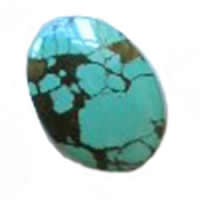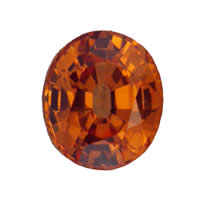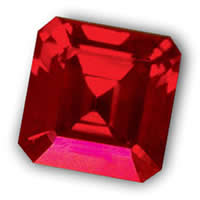

December Turquoise
Turquoise, the birthstone for December, is a blue-green stone which is often veined, deep brown or black, which gave its name to the colour that everyone now knows as turquoise.
Reputed Properties, Myths & Folklore
Turquoise is valued by the Navajo and Hopi as a sign of prosperity and fertility of the soil. Turquoise is also seen as a protective stone and giving turquoise to a friend will bless and protect them. Crystal healers use turquoise for detoxification and treating asthma, dental problems, high blood pressure, infections, and TMJ. Turquoise is also reputed to have communicative properties, providing a connection to the spirit world and promoting spiritual attunement. Different colors of turquoise are considered to have different benefits.
Formation of Turquoise
Turquoise is a secondary mineral found in copper deposits. It forms over time through two processes: weathering and oxidation. Weathered igneous rocks develop pores, cracks and crevices. In a process known as hydrothermal replacement depositing, water moves through porous rocks, leaching out chemicals. When oxidizing copper deposits leach into cracks and crevices and combine with aluminum and phosphates, turquoise is formed. The presence of different impurities, like sandstone or malachite can form unique patterns within the turquoise.
Chemical Composition
Turquoise is a hydrous hydrate of copper, aluminium, and phosphorous with the chemical formula. CuAl6(PO4)4(OH)8•4(H2O). As this formula shows, the phosphorous combines with oxygen to form phosphate. The term hydrous hydrate means that water is present in the lattice structure of turquoise. Sometimes iron can substitute for some of the aluminium, forming a greener hued turquoise. When the aluminium is completed replaced by iron, another mineral called chalcosiderite forms. When some of the aluminium is substituted with zinc, a yellower hue of turquoise develops. When zinc completely replaces the aluminium, a mineral called faustite develops.
Where Turquoise is Found
Turquoise is formed in igneous and sedimentary rocks in desert climates. The first known use of turquoise occurred over 6000 years ago in the Sinai Peninsula of Egypt. Iranian turquoise is considered by many to be the best in the world and is a bright blue colour and harder than most other variants. Unfortunately, very little turquoise is exported from Iran now. The southwestern United States (Arizona, California, Colorado, Nevada, New Mexico and Utah) and Mexico produce most of the turquoise we use today. Turquoise is also produced in China and Australia, although it has been found on every continent but Antarctica. Copper from different locations has different oxide compositions, leading to different colours and markings.

